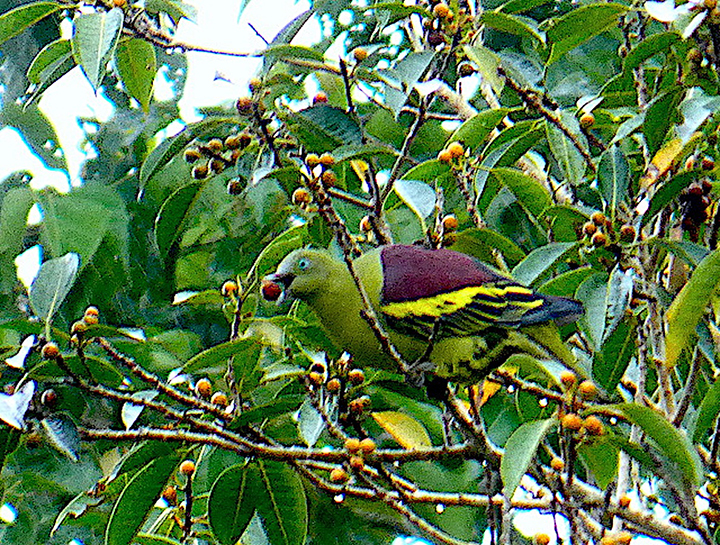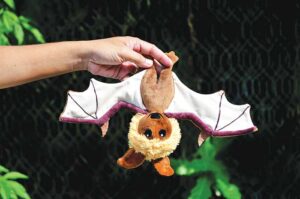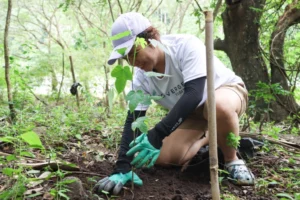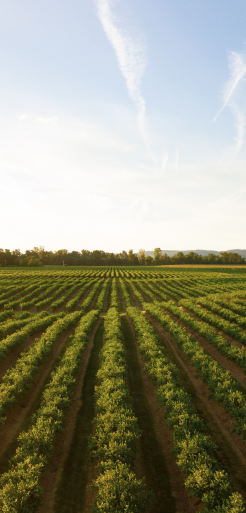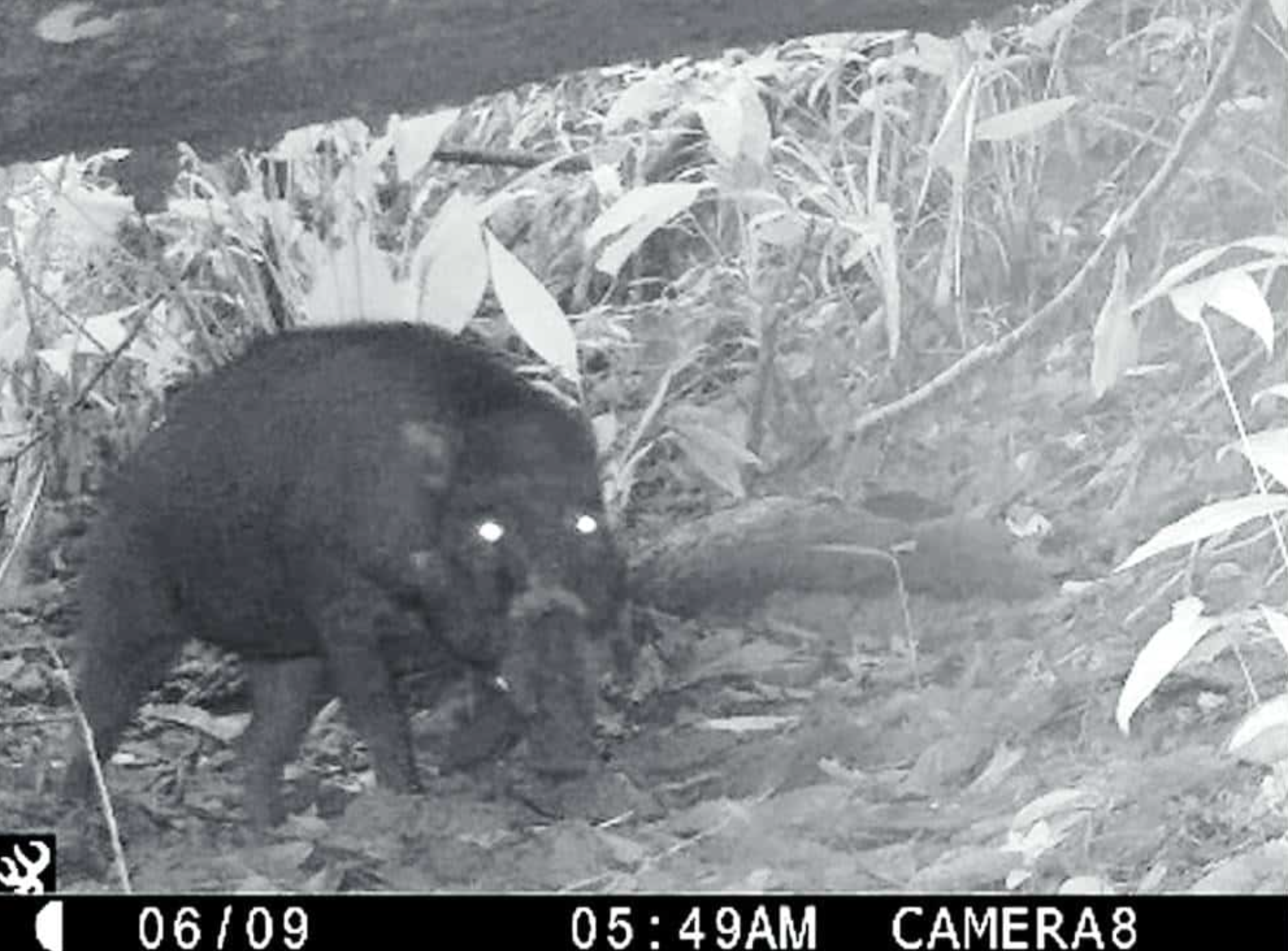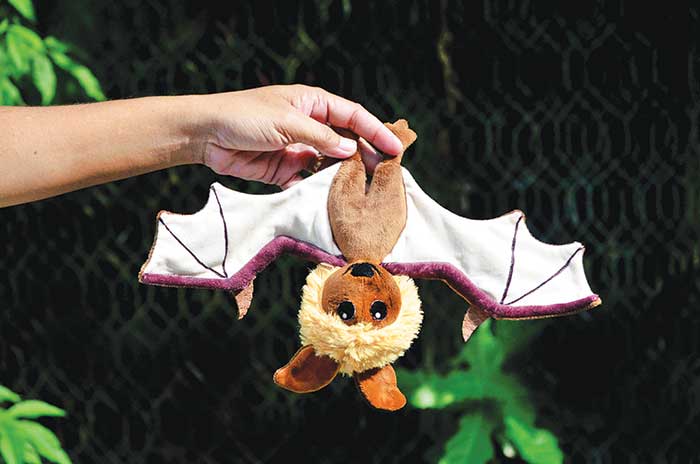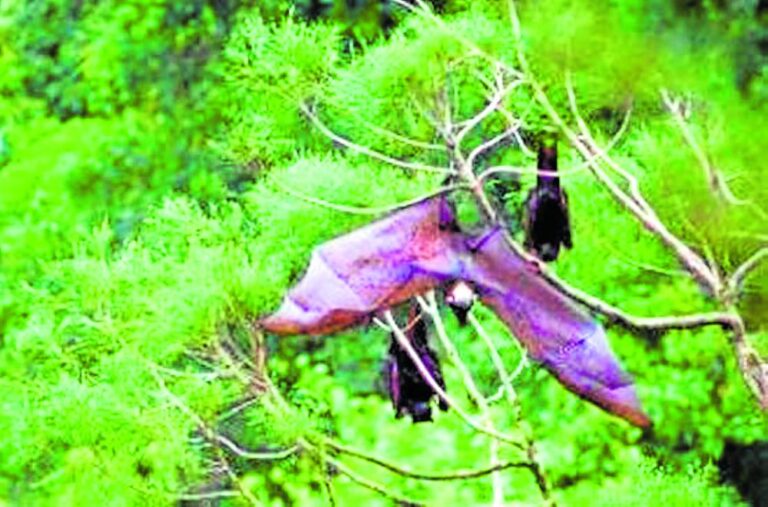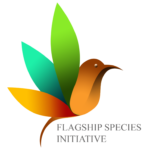Originally published by BusinessMirror
Considered the ultimate tree-planters along with bats, birds need trees to perch on, to rest—sing and dance to find a mate—and a nest to build on and lay their eggs and start a family.
With trees around them, so are the fruits to feed on and seeds to plant wherever they go—even to the urban jungle called a city.

Systematic review, meta-analysis
Researchers from the University of the Philippines-Diliman College of Science Institute of Biology (UPD-CS IB), together with the Norwegian Institute for Nature Research, and the United Kingdom’s Newcastle University are embarking on a systematic review and meta-analysis of previous studies and observations on artificial and natural perches, and how they work in increasing seed dispersal and seedling growth on degraded areas.
The researchers hope that the results will synthesize available evidence on the topic, identify knowledge gaps needed in filling to upscale the strategy and inform their use in concert with other assisted natural regeneration strategies.
The search strategy was informed through a literature scan and discussions with stakeholders and experts.
Moreover, the meta-study aims to see if perches help bring in more seeds and seedlings in terms of numbers and types.
Assisted natural regeneration
The researchers hope to learn how to use perches better and combine them with other strategies to bring damaged forests back to life.
The study underscores the importance of reforestation, particularly through assisted natural regeneration, as the Philippines struggles to combat climate change impacts through mitigation and adaptation while protecting the county’s endangered wildlife.
According to the proponents of the study, reforesting damaged forests is crucial for fighting climate change and protecting wildlife.
As planting trees is expensive, not to mention labor-intensive, a cheaper and more effective approach is Assisted Natural Regeneration (ANR), which can involve the use of bird perches to attract fruit-eating birds that can help spread tree seeds and speed up the natural regeneration of the forest.
‘Greening’ program
The Philippines has been implementing National Greening Program (NGP) to rehabilitate the country’s open and degraded forests.
Initiated by the Department of Environment and Natural Resources (DENR) during the time of President Aquino and then DENR chief Ramon Paje from 2010 to 2016, the program was adapted, and expanded by the Duterte administration, with the enactment of the Expanded National Greening Program (E-NGP).
This year, under the Marcos Jr. administration, the DENR is proposing a budget of P24 billion, including an allocation of P2.49 billion for the forestry sector. The proposed budget includes targets to increase the country’s forest, employment from resource-based enterprises, and establishment of livable communities.
So far, under the NGP, the country’s forest cover was reported to have increased by 5.65 percent, with over 2.2 million hectares of plantation forest having been established, employing more than 889,895 individuals and generating 6,142,396 jobs.
For 2024, the proposed budget is allocated for forest development, rehabilitation, maintenance, and protection for the NGP, to develop 31,992 hectares of new forest plantation, production of 19 million seedlings, maintain and protect 95,406 hectares of NGP sites, and assessment of 42,265 hectares of graduated NGP sites.
However, the catch is that reforestation requires the establishment of a nursery and production seedlings before conducting massive tree planting.
Deforestation
The Philippines is losing its forests faster than the government and the private sector combined can reforest.
It was because of this situation, along with the NGP, that made the Aquino administration impose a ban on harvesting trees from natural forests.
Unfortunately, the forests that were established through the massive reforestation were planted to fast-growing and non-native trees that were meant to be harvested for fuel in three years’ time.
Finally realizing this mistake, the DENR’s Forest Management Bureau (FMB) and private-sector partners implementing the NGP are now planting native or indigenous tree species, combined with some fruit-bearing trees in order to boost the campaign against hunger and poverty in NGP sites.
Biodiversity haven…or not
Sought by the BusinessMirror for insights on reforestation and biodiversity, environmentalist Gregg Yan of Best Alternatives said forests can be a haven for diverse species of plants, as well as animal wildlife.
Forests that are comprised of native trees almost always support more biodiversity than forests planted with non-native and potentially invasive flora, Yan told the BusinessMirror via Messenger on September 26.
“The reason is simple. Everything in a forest has for untold generations adapted to life alongside native plants—from worms and insects to fungi and bacteria. Replacing native plants may cause the slow, silent death of an area’s biodiversity,” Yan said.
He cited some man-made forests in the country, including “the Bilar Forest in Bohol, which was planted with imported mahogany trees in the 1960s.”
Today, Yan said the area is heavily forested, but native biodiversity never really returned.
Worldwide ‘mistake’
Unfortunately, this pattern has been repeated a thousand times over, and not just locally too, Yan lamented.
“The UN Food and Agriculture Organization (UN FAO) states that 44 percent of the planet’s planted forests include non-native species, drastically altering the composition of the world’s forests,” he said.
To be fair, Yan added that some kinds of non-native trees might attract certain types of life.
“Birds, bugs and bats, for example, always try to forage for fruits and nuts wherever they can find them. Moreover, so many non-native trees have already become part of the local landscape, like Indian mangoes, aratilis, duhat and rambutan trees. Generations of wildlife have already learned to profit from them, too,” he said.
He pointed out that to truly bring back Philippine biodiversity, native and endemic plants and trees should be prioritized for all tree planting and forest restoration initiatives.
Science-based reforestation
International biodiversity expert Theresa Mundita S. Lim, meanwhile, said the study being endeavored by UP scientists is laudable as it will help improve the way we do reforestation.
“With science-based plans and policies, studies on ecology and natural regeneration in our reforestation efforts, we will have a more efficient, cost-effective and sustainable greening program,” said Lim, the executive director of the Asean Centre for Biodiversity (ACB).
Lim underscored the importance of protecting and conserving native birds as they perform very important ecosystem functions.
But how to do it is a big challenge, considering the many threats to their existence, particularly habitat loss due to human encroachment of forests, even in Protected Areas, hunting for food and trophy animals and the illicit pet trade.
Efficient tree-farmers
“Birds that feed on wild fruits in the natural forests help in seed dispersal. They expand the forest naturally, through their droppings. Unlike humans, the birds can reach areas that are inaccessible and, therefore, help restore forests in steep and difficult slopes that have been destroyed from buffering us against natural disasters,” Lim said.
Lim pointed out that studies have also shown that seeds processed in the guts of birds have higher rates of survival than those that were planted by humans.
According to Lim, planting trees in urban areas and their vicinities are already proven to have public health benefits, such as helping to clean the air and relax the mind.
“For birds and for ecological benefits, which have long-term public health impacts, urban greening needs to be planned. Baseline information on the local vegetation and identifying native fruiting species that thrive in the natural areas around the cities would be useful to create biodiversity corridors that not only help birds thrive, but also restore and protect ecosystem functions for more resilient and sustainable urban development,” she said.
More importantly, Lim said allowing nature to take its course—such as for birds to do their job—would be the best way to let nature thrive.
“Native species are adapted to our local conditions, function better for resiliency, and support life cycles; and provide a food source for indigenous wildlife, as well as reduce risks of introduction of invasive species,” Lim explained.
Image credits: Jelaine Lim Gan, Gregg Yan


